| | Background | Life cycle | Host plants and damage | Monitoring | Control | Best management practices
.
The cabbage seedpod weevil (Ceutorhynchus obstrictus) was introduced to North America from Europe about 70 years ago. The weevil was discovered in British Columbia in 1931, and from there, it dispersed south and eastward. It now occurs throughout most of the temperate region of the United States.
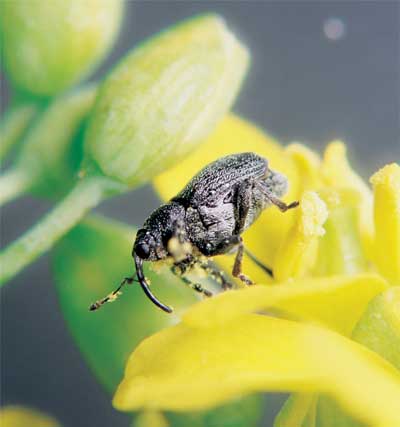
Figure 1. Adult cabbage seedpod weevil on canola
Background
Cabbage seedpod weevil was first found infesting canola in southern Alberta in 1995, and since then, the weevil has spread to central Alberta and southwestern Saskatchewan. In 2000, the pest was found in Quebec for the first time.
The majority of damage to canola crops is done when larvae feed within pods and destroy developing seeds.
Life Cycle
The cabbage seedpod weevil takes about eight weeks to develop from egg to adult (Figure 2). The development time will vary somewhat depending on weather conditions, especially temperature. There is one generation per year.
Adults
The adults overwinter beneath leaf litter in tree shelterbelts, roadside ditches and woodlots. During September to early November, they select overwintering sites and burrow beneath the soil surface where they are protected from low temperatures.
In the spring, the adults emerge over a period of several weeks, and peak emergence occurs when soil temperatures reach 15 C.
Adults seek out early flowering brassicaceous weeds and are especially attracted to stands of wild mustard
(Sinapis arvensis L.) and volunteer canola.
Adult weevils have ash-grey elytra (wing covers) as well as ash-grey abdomens and are approximately 3 to 4 mm long. They have a prominent curved snout that is typical of most weevils (see Figure 1).
The adults move to canola crops in June when the crop is in the bud to early flowering stages. They feed on canola pollen, nectar, buds and racemes. The adults may concentrate along field edges before spreading out more uniformly across the canola field.
When disturbed, the adults often drop to the ground and “play dead.” After several seconds, they resume activity.
Mating occurs from spring to early pod development, usually on a host plant. The majority of eggs are laid shortly after flowering. The female lays the eggs inside the developing pod.
Eggs
Eggs are very small, oval and opaque white. Most often, only a single egg is deposited per pod; however, two or more eggs can be laid per pod during outbreaks. Eggs hatch in about six or seven days, and females continue to lay eggs until they die later in the season.
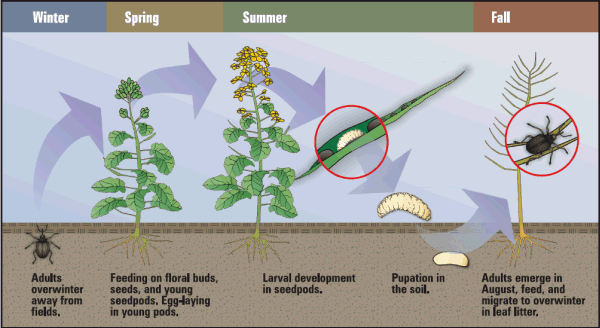
Figure 2. The cabbage seedpod weevil life cycle
Larvae
Larvae are white and grub-like, without legs or eyes (Figure 3). Soon after hatching, the larvae begin feeding within the pods on developing seeds.
Larval development takes approximately six weeks, and during this time, a single larva consumes five to six canola seeds. There are three larval stages (instars).
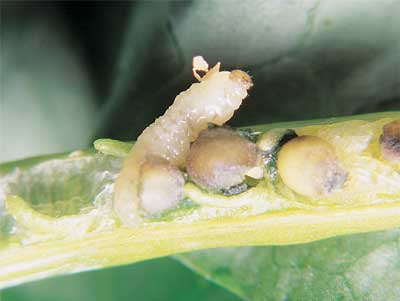
Figure 3. Cabbage seedpod weevil larva
Pupae
Mature larvae chew small, circular exit holes in the pod walls, drop to the ground, burrow in and pupate within earthen cells (Figure 4). New generation adults emerge about 14 days later and feed on immature canola or other green cruciferous plants until late in the season when they enter overwintering sites.
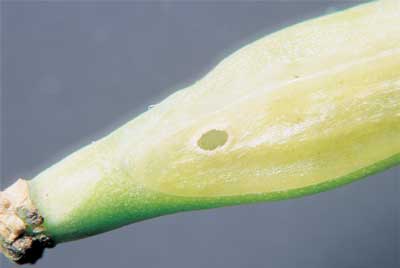
Figure 4. Cabbage seedpod weevil exit hole
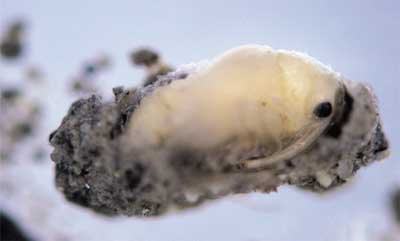
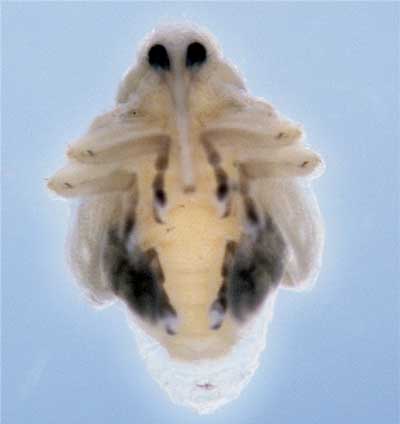
Figure 5. Cabbage seedpod weevil pupae
Host plants and damage
Host plants of the cabbage seedpod weevil all belong to the mustard family (Brassicaceae) and include canola, brown mustard, cole crops (e.g. cabbage, broccoli, cauliflower) and cruciferous weeds (e.g. wild mustard, flixweed, stinkweed).
Host plants are either “true hosts” or “food hosts.” Both hosts can provide food, especially pollen, for adult feeding, but only those with large seedpods that can sustain larval development are true hosts. Examples of true hosts are canola, brown mustard and wild mustard; examples of food hosts are flixweed, stinkweed and hoary cress.
The majority of crop damage occurs when larvae feed within developing pods. Each larva can consume five to six seeds. Although this amount represents only 15 to 20 per cent of the total yield of a particular pod, these pods are predisposed to premature shattering. Pods in the top half of the main racemes and those in lower or secondary branches are not damaged.
Canola pods harboring cabbage seedpod weevil larvae often appear distorted. When larvae consume some seeds within pods, the undamaged seeds enlarge and mature, often leaving misshapen pods (Figure 6).
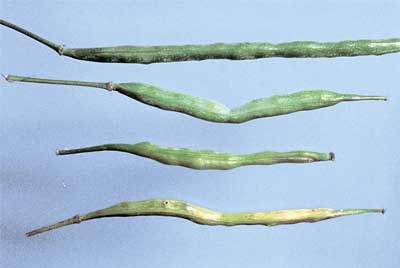
Figure 6. Normal canola pod (top) and pods distorted by internal feeding damage from cabbage seedpod weevil larvae
Adults also feed on flower buds, causing bud-blasting and reduced yield potential in dry years when the ability of plants to compensate is limited. Canola in the pre-bolting to early flowering stage can compensate for adult weevil feeding on buds and stems.
Larvae emerge from pods via exit holes. In humid weather, these exit holes provide an entry point for fungal infections, and additional seeds can be damaged (see Figure 4).
When new generation adults emerge in late summer, they can invade nearby fields and damage the immature pods of late-seeded canola by feeding directly on the seeds through the pod walls (Figure 7).
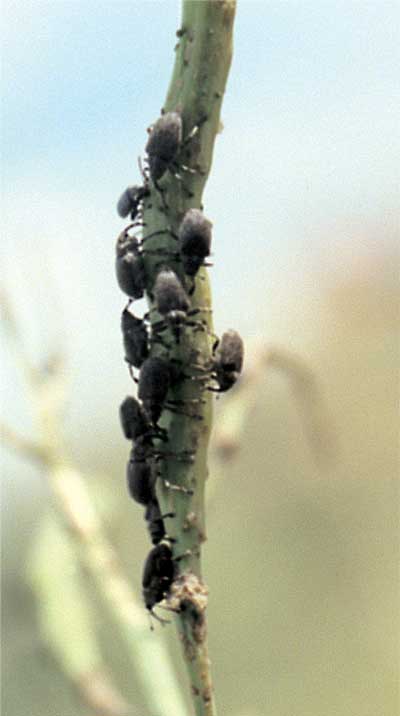 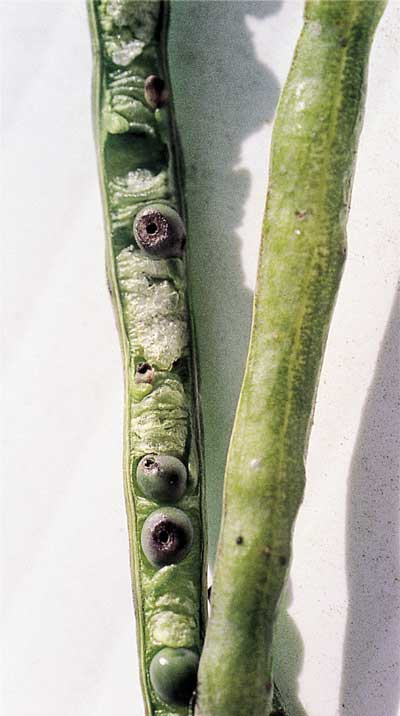
Figure 7. New generation weevil adults and feeding damage
Cabbage seedpod weevil and lygus bug
Research in southern Alberta has found that lygus bug (Lygus spp.) (Hemiptera: Miridae) and cabbage seedpod weevil can occur at the same time. Preliminary results have found that spraying for weevils reduces lygus abundance in some cases, although canola planting date had an effect and no consistent effect was seen on yield.
Under lygus outbreak situations, early flower spray did not prevent lygus from reaching threshold levels. Until the research is finalized, growers should continue to scout and manage cabbage seedpod weevil and lygus bug separately.
Monitoring
Alberta Insect Pest Monitoring Program
The distribution and abundance of the cabbage seedpod weevil have been monitored yearly in western Canada since 1997. Predictive models based on climate data indicate that this pest will eventually disperse to all regions of canola production in western Canada, including the Peace River region. However, so far, it has remained a concern only south of Highway 1.
Because the adult is the overwintering stage of the cabbage seedpod weevil, the risk of infestation can be predicted based on the adult population of the preceding fall. High numbers of weevil adults in fall will likely mean significant infestation levels in the following spring, although a severely cold winter with little snow cover could reduce the survival of overwintering adults.
Surveys are conducted yearly and cover all the canola growing areas of Alberta. A Cabbage Seedpod Weevil Forecast map can be found on Alberta Agriculture’s website.
Adult populations: field scouting
The earliest flowering canola crops tend to have the highest risk from cabbage seedpod weevil and should be monitored very closely.
Cabbage seedpod weevil adult abundance is monitored by taking sweep net samples. Sampling should begin when the crop first enters the bud stage and continues through the flowering period.
Select ten locations within each field, and at each location, count the number of weevils from ten 180° sweeps. Sampling locations should include both the perimeter and interior of the field to obtain an accurate estimate of weevil numbers throughout the field. At the crop’s very early flower stage, weevils congregate along the edges, and it may be possible to simply spray the edge if done early enough.
Follow this link to a video on proper sweep techniques for cabbage seedpod weevil.
A few other weevil species may also be found occasionally in canola, but these do not require control measures. The most common of these is a closely related species, Ceutorhynchus neglectus, about one-half the size of the cabbage seedpod weevil that will feed on canola but prefers flixweed.
Beneficial insects may be present, and their conservation should be taken into account before spraying insecticides. If the land was planted to cereal the previous year, parasitoids of key pests such as the wheat stem sawfly, cereal leaf beetle or wheat midge may be present, and spraying could reduce their populations and lead to future pest problems.
Economic thresholds
When to take action
Chemical control is recommended when an average of 3 to 4 adult weevils are collected per one 180° degree sweep sample at 10 to 20 per cent flowering.
Control
Environmental control
Cooler temperatures and rainfall in August favour the development of the new generation of weevils and may lead to higher numbers in the following year.
Cold winter temperatures can affect the overwinter survival of adults, with survival decreasing as temperatures move from 5 C to -5 C. At soil temperatures below -7 C, the insect freezes. Longer overwintering periods have much less effect on overwinter mortality than cold temperatures.
The mean temperature required for the insect’s flight height of 1 metre is 12 C, and flight height increases with temperature. However, increases in relative humidity can reduce flight heights and dispersal distances.
Biological control
Predators, parasites and diseases have important roles in regulating insect pest populations. Extensive sampling of canola fields in southern Alberta and Saskatchewan from 2001 to 2006 revealed a total of 15 parasitoid species attacking the weevil, representing 5 families of Hymenoptera.
The dominant natural enemy fauna of cabbage seedpod weevil on the prairies is composed of a group of 14 species of larval ectoparasitoids, with more than 90 per cent of all parasitism inflicted by the pteromalids Trichomalus lucidus (Walker), Chlorocytus sp., and Pteromalus sp. and the Eulophid Necremnus tidius (Walker).
Parasitism of cabbage seedpod weevil larvae increased from 0.1 per cent in 2002 to 5.0 per cent in 2004, and increased further from 2004 to 2005, but total parasitism was usually less than 15 per cent. To date, the effect of biological control agents on cabbage seedpod weevil populations in western Canada has been minimal.
In Europe and the United States, parasitic wasps are effective for reducing both adult and larval weevil populations (Figure 8). The most important species are Microctonus melanopus, a wasp that parasitizes adult weevils, and Trichomalis perfectus, a wasp that attacks weevil larvae within the pods.
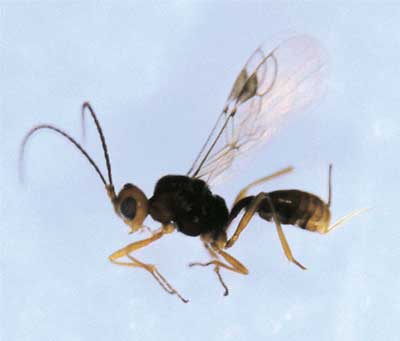
Figure 8. Parasitic wasp of cabbage seedpod weevil adults
Chemical control
If chemical control is required, the best time to spray is when crops are in 10 to 20 per cent flower. This timing will help prevent egg laying in newly formed pods. This stage is when 70 per cent of plants in the field have at least 3 to 10 open flowers.
Spraying at this stage will allow the weevils more time to move into the field, but at the same time, it is still early enough to keep them from laying a significant number of eggs in newly forming pods. Spraying after this stage, when populations are at or above threshold, may not only result in yield loss, but will also affect beneficial insects, including pollinators, which have moved into the field.
Please refer to the current edition of Alberta Agriculture and Rural Development’s Crop Protection guide (Blue Book), Agdex 606-1, for products registered for cabbage seedpod weevil control or check the website.
Spray for the pest in the morning or evening for best results and to protect pollinators. Spray when temperatures are between 15 to 24 C. Always consult the product label for appropriate rates and application guidelines.
Cultural control
At present, trap cropping is the most promising cultural control strategy for controlling the cabbage seedpod weevil. This approach takes advantage of the concentration of weevils that often occurs at the field edges when they first invade a canola field.
By planting a trap border of early flowering B. rapa on the perimeter of the main crop of B. napus, cabbage seedpod weevils may be controlled with an insecticide applied to the perimeter before they spread throughout the field. Alternatively, a strip of the same crop variety planted 7 to 10 days before the rest of the field can serve as a trap for adult weevils. However, drought after seeding may cause simultaneous germination, so it is a good idea to select an earlier flowering cultivar for the border.
In southern Alberta research, this trap cropping worked well in large square fields that were 1.6 by 1.6 km. However, trap cropping was not as effective in small, narrow fields, especially when weevil densities were high.
Later seeding of canola can help reduce weevil damage, as cabbage seedpod weevil are attracted to early seeded canola. However, this strategy needs to be balanced with the benefits of early seeding. Research has consistently shown that early seeding produces higher yields in the absence of insect pests.
A balanced nitrogen and sulphur fertility program helps ensure that excessive levels of sulphur in plant tissue do not attract cabbage seedpod weevil adult females. Females prefer to feed and lay eggs on plants with high levels of sulphur and low levels of nitrogen. Larval development time increases with increasing nitrogen levels.
Brassicaceae crops show different levels of susceptibility to cabbage seedpod weevil. Susceptibility is rated as
B. rapa > B. napus = brown mustard = B. carinata. Yellow mustard, Sinapis alba, is completely resistant to cabbage seedpod weevil. Yellow mustard crops will not require monitoring or control measures.
Researchers have developed resistant germplasm based on Sinapis alba crosses with B. napus. The germplasm has been sold to a plant breeding company, and in the future, resistant hybrid canola may be available.
Best management practices
.
- Monitor adult populations in the fall to predict the risk of infestation the following spring.
- Scout in the spring when the crop first enters the bud stage and continue scouting through the flowering period.
- Early seeded fields are at higher risk. Pay particular scouting attention to these fields.
- Select 10 locations within each field, half of them along the border, and at each location, count the number of weevils from ten 180 degree sweeps with a sweep net.
- Chemical control is recommended when an average of 3 to 4 adult weevils are collected per one 180 degree sweep sample at 10 to 20 per cent flowering.
- Insecticide application targets adults when crops are in 10 to 20 per cent flower to avoid egg laying in newly formed pods. This is the stage when 70 per cent of plants in the field have at least 3 to 10 open flowers.
- Spray when temperatures are between 15 C to 24 C.
- Spray in the morning or evening for best results and to protect pollinators.
- Total parasitism by natural enemies is usually less than 15 per cent, but parasitism is important for controlling weevil populations.
- Consider trap cropping on large fields to reduce insecticide costs and protect natural enemies.
Acknowledgements
Scott Meers, Alberta Agriculture and Rural Development
With thanks to Hector Cárcamo, Agriculture and Agri-Food Canada, for reviewing the manuscript.
This publication originally cited as Dosdall, L.M., D. Moisey, H. Carcamo, R. Dunn. 2001. Cabbage Seedpod Weevil Factsheet. Alberta Agriculture, Food and Rural Development Agdex 622-21, 4 pp.
References
Blake, A.J., L.M. Dosdall, and B.A. Keddie. 2010. Plant nutrients and the spatiotemporal distribution dynamics of Ceutorhynchus obstrictus (Coleoptera: Curculionidae) and its parasitoids. Environ. Ent. 39:1195-1205.
Blake, A.J., L.M. Dosdall, and B.A. Keddie. 2011. Bottom-up effects of Brassica napus nutrition on the oviposition preference and larval performance of Ceutorhynchus obstrictus (Coleoptera: Curculionidae). Arthropod-Plant Interac. 5:39-48.
Buntin, G.D., J.P. McCaffrey, P.L. Raymer, and J. Romero. 1995. Quality and germination of rapeseed and canola seed damaged by adult cabbage seedpod weevil, Ceutorhynchus assimilis (Paykull) [Coleoptera: Curculionidae]. Can. J. Plant Sci. 75:539-541.
Butts, R.A., and J.R. Byers. 1996. Cabbage seedpod weevil: A potential new pest of canola in southern Alberta. Pest Manag. News 8:5.
Cárcamo, H.A., R. Dunn, L.M. Dosdall, and O. Olfert. 2007a. Managing cabbage seedpod weevil in canola using a trap crop – a commercial field-scale study in western Canada. Crop Prot. 26:1325-1334.
Cárcamo, H.A., C.E. Herle, J. Otani, and S.M. McGinn. 2009. Cold hardiness and overwintering survival of the cabbage seedpod weevil, Ceutorhynchus obstrictus. Entomol. Exp. Appl. 133:223–231.
Dosdall, L.M., D. Moisey, H. Cárcamo, and R. Dunn. 2001. Cabbage seedpod weevil fact sheet. Alberta Agriculture, Food and Rural Development Agdex 622-21, 4 pp.
Dosdall, L.M., and D.W.A. Moisey. 2004. Developmental biology of the cabbage seedpod weevil, Ceutorhynchus obstrictus (Coleoptera: Curculionidae), in spring canola, Brassica napus, in western Canada. Ann. Entomol. Soc. Am. 97:458-465.
Dosdall, L.M., and L.S. Kott. 2006. Introgression of resistance to cabbage seedpod weevil to canola from yellow mustard. Crop Sci. 46:2437–2445.
Dosdall, L.M., B. J. Ulmer, G. A. P. Gibson, and H. A. Cárcamo. 2006a. The spatio-temporal distribution dynamics of the cabbage seedpod weevil, Ceutorhynchus obstrictus (Coleoptera: Curculionidae), and its larval parasitoids in canola in western Canada. Biocontrol Sci. Technol. 16:987-1006.
Dosdall, L.M., D. Moisey, L. Kott, B.A. Keddie, A. Good, H. Rahman, P.G. Mason, O. Olfert, H. Cárcamo, U. Kuhlmann, R. McKenzie, M. Hartman, K. Fry, H. Philip, J. McCaffrey. 2006b. Integrated Management of the Cabbage Seedpod Weevil. Univ. Alberta Tech. Rep.,
535 pp.
Dosdall, L.M., G.A.P. Gibson, O. Olfert, B.A. Keddie, and B.J. Ulmer. 2007. Contributions to the life history, host range, and distribution of Necremnus tidius (Walker) (Hymenoptera: Eulophidae). Ann. Entomol. Soc. Amer. 100:861-868.
Dosdall, L.M. 2009. Responses of the cabbage seedpod weevil, Ceutorhynchus obstrictus (Marsham) (Coleoptera: Curculionidae), to seed treatments of canola (Brassica napus L.) with the neonicotinoid compounds clothianidin and imidacloprid. Pest Manag. Sci. 65:1329-1336.
Dosdall, L.M., G.A.P. Gibson, O.O. Olfert, and P.G. Mason. 2009. Responses of Chalcidoidea (Hymenoptera) parasitoids to invasion of the cabbage seedpod weevil (Coleoptera: Curculionidae) in western Canada. Biol. Inv. 11:109-125.
Fox, A.S., and L.M. Dosdall. 2003. Reproductive biology of Ceutorhynchus obstrictus (Coleoptera: Curculionidae) on wild and cultivated Brassicaceae in southern Alberta. J. Entomol. Sci. 38:365-376.
Fox, A.S., S.R. Shaw, L.M. Dosdall, and B. Lee. 2004. Microctonus melanopus (Ruthe) (Hymenoptera: Braconidae), a parasitoid of adult cabbage seedpod weevil (Coleoptera: Curculionidae): Distribution in southern Alberta and female diagnosis. J. Entomol. Sci. 39:350-361.
Gibson, G.A.P., H. Baur, B. Ulmer, L. Dosdall, and F. Muller. 2005. On the misidentification of chalcid (Hymenoptera: Chalcidoidea) parasitoids of the cabbage seedpod weevil (Coleoptera: Curculionidae) in North America. Can. Entomol. 137:381-403.
Tansey, J.A., L.M. Dosdall, A. Keddie, and O. Olfert. 2010a. Flight activity and dispersal of the cabbage seedpod weevil (Coleoptera: Curculionidae) are related to atmospheric conditions. Environ. Ent. 39:1092-1100.
Ulmer, B.J., and L.M. Dosdall. 2006. Spring emergence biology of the cabbage seedpod weevil (Coleoptera: Curculionidae). Ann. Entomol. Soc. Amer. 99:64-69.
More information, contact
Alberta Ag-Info Centre
Call toll free 310-FARM (3276)
Website: Agriculture and Rural Development
Source: Agdex 622-21.Revised January 2014. |
|